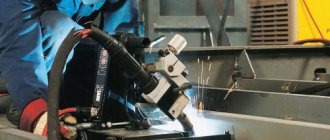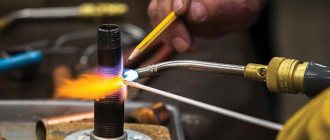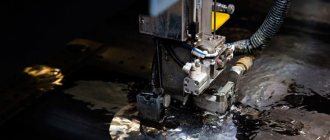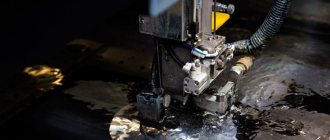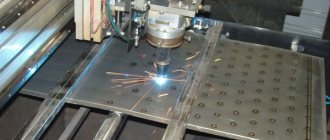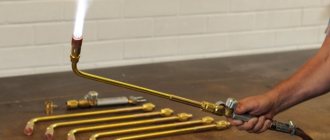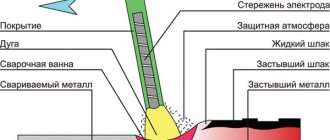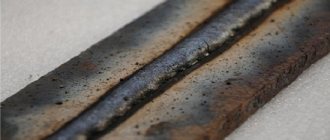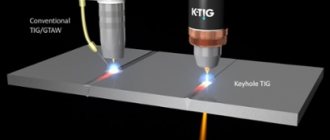Hydrogen welding is a type of gas flame processing. Its distinctive feature is the combustion of a flame in a hydrogen atmosphere. Today, among all types of gas-flame treatments, this method is the most popular.
It is highly efficient and serves as an excellent alternative to acetylene welding. In addition, you can make a hydrogen welding machine with your own hands at home, which makes it even more interesting.
Advantages of hydrogen welding
Hydrogen welding has a number of advantages compared to other analogues. Its main advantage is that during the combustion of the welding torch, water vapor is released, so it is the safest.
In addition, this technology provides high operating temperatures, which means it allows you to work with more refractory metals. Hydrogen welding can be easily used at home, since anyone can make a welding machine with their own hands.
Another most commonly used method is acetylene welding.
Hydrogen welding technology.
At the same time, hydrogen in many cases turns out to be more preferable due to its features:
- allows you to obtain neat, tight seams;
- ability to work with small parts;
- the high temperature of the gas torch allows not only welding, but also cutting of materials;
- making a hydrogen burner with your own hands is a feasible task not only for masters, but also for beginners;
- the ability to perform work in a confined space;
- The hydrogen welding machine is small-sized and easy to transport.
Despite the many advantages of atomic hydrogen welding, it is not without its disadvantages. The main ones are the difficulties of working with copper products, some alloy steels, and also with massive materials.
Advantages and disadvantages of hydrogen welding
Connecting parts in this way has many advantages that cannot be ignored:
- high efficiency,
- safety of welding work,
- environmental friendliness, since no harmful toxins are released into the atmosphere,
- The devices are compact and easy to operate,
- suitable for processing parts made of various materials: steel, glass, cast iron, non-ferrous metals,
- work on water, no other components are required for normal uninterrupted operation,
- The welding machine does not need to be recharged.
Application of the method
Gas flame welding is carried out due to the combustion of a gaseous mixture. The most commonly used is acetylene welding. It is based on the oxidation of carbide in water.
If low temperatures are required, for example when working with small parts or thin metal, propane is used. It is fed from the cylinder into the mixing chamber and then into the burner.
Oxygen is supplied to the same chamber to support gas combustion. By adjusting the oxygen pressure, it is possible to achieve a combustion temperature of up to 3000 degrees, which allows not only welding, but also metal cutting.
The disadvantage of this technology is the need to use a gas cylinder. This places restrictions on the use of welding in many difficult conditions.
Unit for hydrogen welding.
The operating principle of hydrogen welding is based on the process of separating water into hydrogen and oxygen. As a result of the subsequent recombination of monatomic hydrogen into diatomic hydrogen, energy is released, which accelerates welding.
The welding area is protected from oxygen by hydrogen, which eliminates surface oxidation and ensures smooth seams.
Using hydrogen cylinders for rafting is dangerous. Leakage in confined spaces may cause suffocation or dizziness. It is also explosive.
The production of hydrogen necessary for the operation of the welding machine is carried out directly at the welding site in the electrolysis chamber. This eliminates these risks if the equipment is used correctly and safety precautions are followed.
Hydrogen welding is widely used in difficult conditions: tunnels, mines, sewers. It is impossible to use propylene-acetylene cylinders for such tasks due to the high risk of mixture leakage and explosion.
Electrolysis equipment does not have these disadvantages and is widely used in these areas.
Using hydrogen welding machines is quite simple. They do not require frequent recharging and quickly reach operating temperatures.
In addition, they can operate from a household network, which makes them very attractive for the average user. Especially considering that hydrogen welding can be done with your own hands using one of the many electrolyzer circuits for welding available on the Internet.
general information
The League company produces gas welding equipment that runs on water. To improve the quality of the result, it is worth using the distilled type.
The essence of the working process is that the device has a built-in mechanism that electrochemically separates water into its components.
The result is a separated mixture of hydrogen and oxygen. And hydrogen is one of the substitutes for acetylene. The result is a gas welding substance.
At the same time, welding machines are capable of producing a working flame reaching 2600°C. At this temperature, non-ferrous or ferrous metals are processed.
League brand equipment is quite economical. Standard gas welding is several times more expensive than welding with water-based equipment.
After all, it involves renewing spent cylinders. Distilled water is easier and cheaper to obtain. Which is an absolute plus of using this welding machine.
How to make a hydrogen welding machine yourself?
Hydrogen welding is useful to any craftsman. The hydrogen cutter is not a cheap piece of equipment. In addition, commercially available machines are often unsuitable for soldering small parts, especially jewelry.
The way out of this situation is to make atomic-hydrogen welding yourself. All the parts necessary to create such a device can be easily purchased at any hardware store. So, let's look at how to do this at home.
Main capacity
Installation for welding with hydrogen.
The hydrogen welding machine operates as a result of the combustion of hydrogen, due to the dissociation of an aqueous alkali solution.
This process is carried out in a container for which a half-liter jar is perfect. It must be closed with a plastic cover with two holes made to remove contacts from the electrodes.
All terminals must be tightly sealed. Moment glue is suitable for these purposes.
Four-centimeter strips of stainless steel can be used as electrodes. For the best performance of a welding machine, the entire volume of liquid must be used.
To do this, the plates are drilled along the upper and lower edges and connected to each other with dielectric pins. Terminals are made on the resulting block: two negatives located at the edges, and a pole between them.
Each terminal is bent and fixed to the container with a bolt. The terminals from the power source will be attached to these bolts.
The container must be filled with a syringe with working fluid through the gas outlet fitting. The electrolyte is an 8-10% mixture of sodium hydroxide in distilled water. When the electrolyzer is operating, the temperature of the working liquid of the alkaline solution usually does not exceed 80 °C.
The second vessel acts as a hydrodispenser. In it, gases are saturated with vapors of flammable substances. Then the resulting mixture is sent to a third container filled with ordinary water. It acts as a shutter for the release of gases.
An ordinary medical needle can be used as a nozzle through which oxygen, hydrogen and flammable substances will come out.
Current source for atomic hydrogen welding
A regular 12 volt battery can be used as a power source. This option is perfect for working with metal of a fixed thickness.
Its disadvantage is the inability to control the burner flame strength, since its performance is determined by the production of hydrogen and oxygen, which depends on the current strength.
Choosing a charger for car batteries will be more preferable. To work with thin metal plates or jewelry, charging can be set to 3 volts.
Hydrogen welding can be powered with oxygen from a regular 220 V network, which allows you to use this device at home.
Exchange camera
Schematic diagram of a hydrogen welding apparatus.
To select hydrogen and oxygen supplied to the burner, another container is used - an exchange chamber.
You need to make 3 holes inside it:
- for refilling with working fluid;
- at the bottom there is a fitting for supplying working fluid to the main tank;
- fitting for supplying the gas mixture to the nozzle.
The design of the additional container must also be carefully sealed. Gases and liquids should not leak through the hydrogen seals of the hydrogen generator. This is also solved with the help of "Moment".
Making a burner
To make a burner, you can use a regular rubber hose. It is through this that hydrogen and oxygen will be transported from the exchange chamber to the nozzle. You can use a needle from a syringe or dropper as a nozzle. The latter will be a more preferable choice, since the walls of this needle are thicker.
The hose must be tightly secured to the exchange chamber fitting and the needle base. This is achieved using clamps. After completing all operations to assemble the device, you can begin testing it.
Electrolysis of the working fluid begins quickly. After just a few minutes, you can ignite the flame at the end of the nozzle. The flame is adjusted by changing the voltage on the device.
Welding inverter as a current source for electrochemical processing
More details, please.
Yes, I have already mentioned this more than once on the forum, only in other threads.
I have SAI 200. The inverter is based on a bridge circuit, which allows for maneuver. All boards are on connectors. Instead of a standard board with power welding transformers, I attach a trans to a pair of Epkos 63x36x15 ferrite rings (the size of one ring), the inductance of the primary is selected equal to the inductance of the sum of the primary transes (there are three of them working together). Output voltage depends on the number of turns of the secondary. Maximum output power 6 kilowatts. Primary current up to a maximum of 30 amperes. I connect an inductor to the output of the trance secondary. It is advisable to select parameters for a specific task. Soldering the cutters with this is not a problem. Yes, it is advisable to do the output circuit as it should, i.e. with capacitors, achieving resonance. But I don’t have such containers on hand; I manage without resonance. The efficiency is lower, but it works. Power adjustment when the standard board with transaxles is disconnected stops working (feedback connections are broken) and the device is turned on at full power by default. To resume the power control function, I added a variable resistor to the PWM circuit. To achieve resonance (to change the frequency) I added a second variable resistor. Adjustable from 70 to 300 kilohertz. Below 70 is possible, but some circuits greatly distort the curve. That's why I limited myself to this range. All additives do not interfere with the basic functions of the device. Additionally, I hung an oscillator on it, or rather VK-7. It became possible to cook lumen with argon. As an experiment, I hooked up an ultrasonic emitter on ferrite (according to Mayer), it works. If it entered a prohibited mode, the protection was triggered and nothing was burned. On a spare, killed and then restored inverter board, I tried to get an increased voltage (4-6 kilovolts). After a month of experimenting with it, a pair of power transistors flew out, I restored it. They took off due to some unaccounted for errors, the common circuit was not grounded, workarounds were formed. So, I do not recommend the option of obtaining high voltage without careful analysis.
By the way, from it i.e. from SAI 200 at one of the factories they made high-frequency heating in an industrial version, with resonance. There are no complaints, or rather there was one remark: the protection circuit is sensitive to interference, so I had to rebuild it. In my apartment I was not bothered by any interference.
BB.
Bottom line
In many cases, the use of hydrogen welding turns out to be more convenient than other gas-flame methods. It becomes especially relevant when it comes to working at home.
The given description of how to make a hydrogen burner with your own hands will help all craftsmen who want to make such a device. This will significantly save money on purchasing a store-bought welding option.
In addition, a self-made hydrogen cutter is more promising for working with small products. Hydrogen welding is environmentally friendly, and its production does not require much labor and large costs.
The method is also similar to acetylene welding, and mastering it is not difficult.
